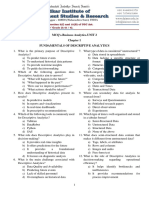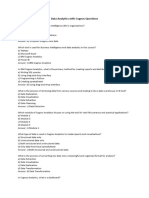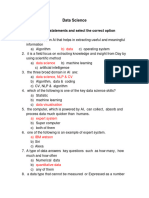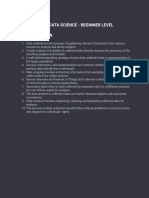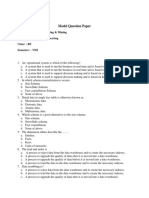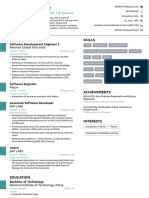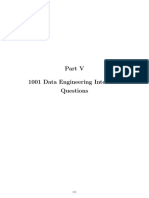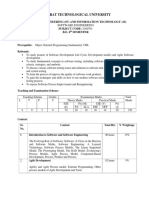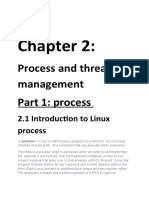0% found this document useful (0 votes)
41 views8 pagesModel Question Paper 3
This document is a model question paper consisting of 60 multiple-choice questions focused on data analysis and visualization concepts. The questions cover various topics such as data cleaning, data types, data visualization techniques, machine learning, and data governance. Each question provides four answer options, requiring the selection of the most appropriate response.
Uploaded by
ganesh123143ganiCopyright
© © All Rights Reserved
We take content rights seriously. If you suspect this is your content, claim it here.
Available Formats
Download as PDF, TXT or read online on Scribd
0% found this document useful (0 votes)
41 views8 pagesModel Question Paper 3
This document is a model question paper consisting of 60 multiple-choice questions focused on data analysis and visualization concepts. The questions cover various topics such as data cleaning, data types, data visualization techniques, machine learning, and data governance. Each question provides four answer options, requiring the selection of the most appropriate response.
Uploaded by
ganesh123143ganiCopyright
© © All Rights Reserved
We take content rights seriously. If you suspect this is your content, claim it here.
Available Formats
Download as PDF, TXT or read online on Scribd
/ 8



















